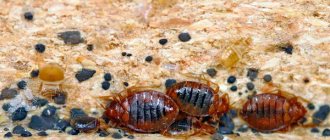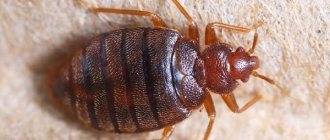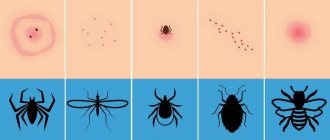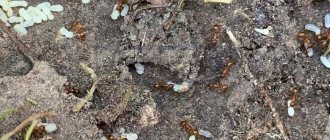There is an opinion that moles are afraid of sharp unusual odors, loud noise and even the presence of certain plants on the site. As a result, they try everything to scare away the animals from the garden - carbide, rotten fish, kerosene, smoke bombs, and sometimes urine poured directly into mole holes.
We will talk about all this in more detail later on which means can really help and which of them are practically useless, as well as what moles are afraid of most.
But first, it’s worth keeping in mind that in practice, with deterrents, things are often not as rosy and simple as we would like. For example, if it were possible to easily and with 100% efficiency remove moles from an area using ordinary rotten fish, then there would be no need to come up with more complex and expensive methods of getting rid of moles - all kinds of traps, electronic repellers, barrier means.
In addition, just theoretically knowing what a mole is afraid of is not enough, since you also need to be able to correctly apply such a repellent in practice, taking into account the specifics of the animals’ underground communications, their habits and biological characteristics, as well as the potential harm of the agent used for the area itself land.
So, let's see what is useful to know about the most popular methods of repelling moles, and let's start, perhaps, with the “classics of the genre” - calcium carbide...
Carbide against moles: difficult, dangerous and unreliable...
As practice shows, carbide against moles sometimes really helps. But not always, and there are situations when, after using carbide, moles seem to start digging even more actively. Why is this happening?
Calcium carbide is a chemically quite active substance, and when pieces of it are placed in the ground, it gradually reacts with moisture, releasing acetylene gas. In addition, technical carbide always contains impurities of arsenide and calcium phosphide, which, when interacting with water, produce strong-smelling arsine and phosphine, respectively, as well as some of their derivatives. These compounds have an unpleasant odor and are also very poisonous.
Although the concentration of arsine and phosphine in the gas released from carbide is small and will not kill the animal with a short exposure, nevertheless, the unpleasant odor will repel moles, forcing them to actively dig new passages and make more ventilation exits to the surface of the earth (mole heaps). Therefore, immediately after using carbide, the apparent effect may be the opposite of what was expected - there will be more fresh piles of earth.
On a note
If you place a piece of calcium carbide in damp soil, it will react quite quickly with the moisture and lose its repellent activity, turning into highly alkaline calcium hydroxide. Therefore, you should not abuse the product - regular strong alkalization of the soil can harm plants growing in the garden, as well as microorganisms in the soil.
However, sometimes simply placing pieces of carbide into mole holes does get rid of the moles, and the animals leave in search of more comfortable conditions (although they may later return).
Some gardeners implement the fight against moles using carbide more harshly: they put the pieces in plastic bottles, fill them with water, and then place such acetylene generators in excavated underground passages and bury them. The calculation here is based on the fact that the released acetylene will displace oxygen from the mole passages and lead to the suffocation of the animals.
Unfortunately, the flayer thought of some sophisticated mole exterminators does not stop there - sometimes the animals are destroyed by first filling the passages with acetylene using carbide, and then setting fire to the resulting acetylene-air mixture.
However, even these far from humane, barbaric methods of fighting moles may not give the desired result: the gas may not be enough to suffocate the animals, acetylene may not explode if its ratio with air is insufficient, and moles can travel far through their underground communications from a suffocating hearth.
Review
“I once tried to buy carbide for moles. It’s not in Radoshkovichi, I wanted to buy it in Minsk. I found it on a railway station, already took out the money, the seller asked why I needed it, I told him. He talked me out of it. He said there was no point, just poisoning the garden. This is terrible chemistry. He advised me to buy a simple trap. Now, such a trap is on its way to me from Minsk. I'll check what it is..."
Mikhail, Radoshkovichi
Brief summary: the use of calcium carbide against moles can hardly be considered justified and effective. Not only does this substance not always repel animals, but it can also kill them (and the death will be painful), and in addition it will also destroy many beneficial inhabitants of the soil, causing, to one degree or another, significant damage to the area of land as a whole. If we take into account the high fire hazard of carbide, we can come to the conclusion that this product has much more disadvantages than advantages.
Cultivated garden attracts pests
During the day, the mole eats its own body weight in food. And he is not able to fast for more than twelve hours. In addition, the animal does not hibernate; it migrates precisely to the boundaries of the cultivated area, where it is easier to dig holes and there are more worms and insects. In winter, the animal burrows below the freezing line of the soil (1.30 meters is the least for sand). In a private garden, all conditions have been created; it is more difficult for an animal to cope without them.
Vegetable gardens, well-groomed newly landscaped lawns, and fertilized indoor greenhouses attract animals. Ideal conditions for feeding are why they settle in your garden.
- The soil has already been loosened: soft and oxygenated, it is conducive to digging numerous tunnels.
- In a dug-up area, in soft soil saturated with oxygen, soil organisms actively reproduce - the main bait. Moles are smart mammals and do not miss this opportunity.
- The animals immediately become masters of the garden: there are no natural enemies, and there is plenty of food in the area. The activity of digging passages is immediately visible by the number of molehills. And if, while digging up potatoes, you keep coming across tunnels, it’s time to take action.
Plants on the site that moles are afraid of
There are many references to the fact that the smell of some plants and simply their very growth on the site can repel moles.
For example, it is believed that the plants that moles are afraid of include the following:
- Onions (including leeks and flowering onions);
- Garlic;
- Daffodils;
- Imperial hazel grouse;
- Siberian blueberry;
- Marigold;
- Euphorbia caper;
- Black beans (perhaps it is black beans that people try to use most often);
- Castor bean.
Review
“Many gardeners I know don’t specifically dig up hazel grouse and everything is fine with them, no moles. I also planted one bulb, then there were no moles in this particular flower garden.”
Svetlana, Moscow
However, in reality, there is no statistically reliable evidence that any of the above plants actually help get rid of moles on the site. Many opinions that a mole supposedly doesn’t like a particular plant are based on statements like this: “I grow black beans every year, and I’ve never had moles, but my neighbors don’t grow them, and they constantly fight these pests.” .
It is also useful to keep in mind the following nuance: moles do not feed on underground parts of plants, so they do not “taste” planted onions, garlic and other plantings. The main food of moles is earthworms and, to a lesser extent, insects and their larvae.
It is also useful to read: How to quickly catch a mole in the garden using simple means
An alternative approach, which gardeners also sometimes try to practice, is to repel moles using onion peels buried in mole holes. It is also believed that moles do not like the smell of cut garlic and onions - and there is a certain rational grain in this, since many living creatures (and not only warm-blooded animals) do not like the pungent odor produced by mechanical damage to these plants. However, the duration of such protection will be very short.
Review
“I’ll say right away: all the stories about daffodils and hazel grouse from moles are fairy tales! I’ve had these plants growing on my property all my life, and this year I planted black beans just for fun. Moles appeared on the site several times, this did not depend in any way on the presence of flowers and beans. My husband and I caught them with a mole trap. These parasites dug up everything for us, both fresh beds with garlic and flower beds with daffodils. Therefore, no plants help against moles!”
Veronica, Uman
Thus, we can conclude: if moles are already rampant in the garden, then it will not be enough to plant a flower for the mole to leave - these animals are not so afraid of plants. It’s another matter if you decide to organize a mass planting of flowers, beans or anything else - during this procedure, the passages of animals close to the surface of the earth will inevitably be mechanically destroyed, which with a small probability may force the moles to temporarily relocate to a neighboring area, where the situation is more stable .
Damage to garden crops by moles
Moles have long and firmly chosen the cultivated lands of garden plots. This is the optimal habitat for them. Loose, soft soil and an abundance of earthworms attract them to their summer cottages like a magnet. Moles consume somewhat less slugs, woodlice, insects and their offspring. The parasite does not disdain small vertebrates, such as mice, lizards or frogs, if it catches up. In one sitting, this glutton eats 20-22 g of earthworms, and in a day - almost his own weight. Between feedings, the mole sleeps in the hole.
Moles do not hibernate, but their winter diet is somewhat smaller and consists of the same worms. The latter are attracted by the smell and warmth in the labyrinth. That is, the mole destroys earthworms that are useful for the gardener all year round.
Loosening the soil could be considered useful for the garden, but these diggers simultaneously turn the beds with garden crops inside out, expose the roots of fruit trees and shrubs, and reduce the number of earthworms that are important for fertility. In addition, a garden plot with numerous bumps on the ground and voids underneath presents an unpresentable appearance and a risk of injury for the owners.
To the delight of the gardener, sometimes new mounds do not appear on the plot for weeks. In this case, it is too early not to rejoice, since moles do not dig when uninvited neighbors have enough food in their feeding tunnels. Diggers become active only when supplies are reduced.
About smoke bombs in the fight against moles
If you suddenly want to “smoke” moles out of the ground using smoke bombs, then it is useful to take into account a number of important nuances.
First of all, you need to keep in mind that there are several types of smoke bombs on sale, and not all of them are equally effective and safe:
- Sulfur bombs - usually used to combat mold in a cellar or greenhouse. When burned, they release sulfur dioxide, which has a pungent odor, strongly irritates the respiratory tract and is poisonous in high concentrations. During normal operation of the checker, it burns with an open flame, that is, it will not be possible to bury it in a mole hole and cover it with earth, since otherwise the flame will go out. Thus, a sulfur bomb will help, perhaps, to remove moles from a cellar or greenhouse, but not from an open plot of land;
- Insecticidal-repellent smoke bombs are used to repel and kill insects. When such bombs burn (smolder), smoke that is poisonous to insects is released, containing, as a rule, insecticides from the pyrethroid group. Due to the pyrotechnic filling, some insecticidal and repellent bombs are capable of burning even when covered with earth. It should be borne in mind that insecticides, when spread through underground passages, will destroy a significant number of underground microorganisms, and can also enter plants (in particular, crops). It is especially not recommended to use checkers based on hexachlorane (G-17 and analogues), since this substance, otherwise called hexachlorocyclohexane, has carcinogenic and teratogenic activity;
- Smoke bombs used in the army to create curtains, as well as signal bombs (with colored smoke) - some of them are also capable of burning underground, and the smoke released is somewhat less toxic to insects and microorganisms than when using insecticidal bombs.
Be that as it may, regardless of whether an insecticidal-repellent smoke bomb or a signal one is used, in this case we are not talking about the harmless “smoking” of moles out of the ground, but about their destruction right in the underground passages. The animals will not come to the surface en masse to breathe fresh air, but on the contrary, they will instinctively try to hide from danger underground, where they will suffocate.
Thus, the method of fighting moles using smoke bombs is barbaric (not to say sadistic), and is not recommended for use in civilized gardening.
On a note
The use of smoke bombs is in many ways similar to another barbaric method of “scaring away” (and in reality, destroying) moles. To do this, a hose is connected to the exhaust pipe of the car, the end of which is immersed in a wormhole and covered with earth. Moles, of course, are afraid of the smell of smoke and, even more so, exhaust gases, but they are more likely to simply suffocate underground than to run away to another area.
In general, the use of smoke bombs against moles does not give a guaranteed result. The smoke may not spread throughout the animal’s entire system of passages, and may also begin to emerge from the ground through numerous molehills.
What damage can moles cause to the garden?
Moles can most often be found in garden plots with loose, fertile soil. They feed on worms, spiders, slugs, insects, and less commonly, mice and frogs. In search of food, animals dig tunnels. They are not interested in plants, but in the process, moles inevitably damage their roots, destroying crops, trees and shrubs. And the beds and lawns quickly begin to resemble something between a minefield and a lunar landscape.
It’s very difficult not to notice that moles have settled in your garden plot.
It should be noted that moles benefit the garden by destroying harmful insects. But at the same time, beneficial fauna, such as earthworms, suffer. Therefore, it is necessary to fight moles. To achieve the desired result, it is necessary to take into account the characteristics of their behavior:
- Most often, a whole family of moles settles on the site - at least 5-6 individuals. Catching one doesn't mean the problem is solved.
- The main life activity of moles takes place at a depth of 5–20 cm. They create very complex systems of mines, tunnels and “halls”. All this is not abandoned; the animals check their condition every day and repair them if necessary. In case of irreversible damage, they simply lay a “path backup” a little lower.
- Moles are afraid of open spaces, rarely coming to the surface. But in the ground they move very quickly (approximately at the speed of a walking person).
- Catching a mole with bare hands while it is in its native element is problematic. This is also unsafe - animals have powerful claws and strong teeth. Once free, they quickly hide in the ground.
- Moles are quite smart and quickly adapt to new conditions. If you use the same method of dealing with them, they learn to avoid danger.
- Having discovered signs indicating the appearance of moles on the site, measures must be taken immediately. In terms of digging tunnels and searching for food, moles are very active, walking 70–80 m per day and eating a mass of insects comparable to their own weight. In 7-10 days they can completely dig up your area.
Contrary to popular belief, the mole is an insectivore and not a herbivore; it does not cause conscious harm to crops and plantings (however, the result of its activity does not change from this)
Food based repellents
Strong-smelling and spoiled food products are classic mole repellents. Moles are really afraid of and avoid many odors of natural food products, and therefore with a certain, albeit not always high, effectiveness in the fight against them, you can use:
- Onion, cut into slices (as well as onion skins);
- Rotten fish and meat;
- Rotten eggs;
- Vinegar (in the form of a concentrated essence).
The task is to place the strong-smelling substance into the mole's passages, giving preference to fresh earth emissions. Having a sensitive sense of smell, the mole senses foreign odors from afar, and sometimes actually abruptly stops all activities in the area, leaving it in search of more comfortable living conditions and underground hunting.
However, this is not always the case. Sometimes the animal continues to dig tunnels as if nothing had happened. Strengthening enforcement measures by burying a head of rotten herring on every square meter of the site is also not the most convenient option, and the area will stink for several weeks.
Review
“Last year the moles took over, there was no way to survive from them. I’ve already bought repellents, stuck rotten herring, and poured bleach into the holes. And the moles were digging right next to it, all to no avail. Then we bought a Norwegian cat kitten. This year there are no moles in the area. That is, you can’t see it at all, there aren’t even mice! The cat works and hunts all night. Keep it up..."
Veronica, St. Petersburg
Prevention
Mole net
In order to never have to poison voracious moles on your site, you need to take timely care to prevent them from gaining access to the garden. And there is such an effective way. It's called barrier. To create protection, a special metal mesh is dug deep (at least 80 cm) into the ground around the perimeter of the garden. The above-ground part may not be high (30 cm). Moles can't jump. They are increasingly underground. These nets are durable, lasting for a quarter of a century.
You can also dig in slate, corrugated board, linoleum, and roofing felt around the perimeter of the site. The main thing is that the depth is at least 35 cm.
Some gardeners make embankments around the perimeter of the garden. Sand and crushed stone are used as filler.
All gardeners have the goal of growing a rich harvest. The plans do not include feeding unwanted “neighbors”, so work to protect the territory must be carried out constantly. It would be advisable to dig deep in the fall to destroy the mole labyrinths and place strong-smelling objects around the perimeter. If you manage to keep the moles at a distance before frost, then there is every reason not to catch them on the site in the spring.
*Prices are current as of September 2022.
0 0 votes
Article rating
Essential oils and products based on them
Essential oils act on moles with approximately the same effectiveness as rotten fish, the only difference being that the oils are much more pleasant to use. Moreover, in order for the chances of getting rid of pests to be high enough, the smell of the essential oil should be more or less evenly distributed over almost the entire area.
It’s also useful to read: How to make a mole trap from plastic bottles with your own hands
This can be achieved, for example, in the following way:
- Buy a strong-smelling essential oil (sold in pharmacies). The optimal and most effective option is lavender oil, although pine, fir or cedar oil is also suitable. Sometimes gum turpentine, camphor or castor oil are also used;
- Next, the essential oil is added to a simple dough. The bigger, the better;
- Then the dough is rolled into balls with a diameter of about 1 cm;
- The balls are buried in the ground to a depth of approximately 20 cm throughout the entire area at a distance of 1 m from each other, and along the borders in increments of 50 cm. It is not recommended to bury the balls in molehills.
By the way, it is precisely this principle of repelling that the Detia mole repellent works on – balls with lavender extract, made in Germany.
On a note
A folk remedy for repelling moles in the form of garlic minced through a meat grinder and mixed with camphor oil also has a similar principle of action. The resulting slurry is poured into holes on the territory and along the boundaries of the site.
It cannot be said that moles are downright afraid of the smell of essential oils, but practice shows that the animals still try to avoid it. Therefore, although you should not expect total effectiveness from such means, with the right approach, this technique sometimes really helps gardeners drive moles out of the area and protect themselves from the penetration of new pests from the outside.
Mechanical fight
Over the centuries of proximity to moles, people have learned to fight them. At the same time, there was almost no goal to destroy them. Folk methods were aimed at removing them from the garden plot, taking into account the excellent sense of smell and hearing of diggers. That is, they created unbearable noise or used strong-smelling products.
A very simple and effective scarecrow is made from an iron rod and an empty tin can. To do this, a metal rod is stuck next to the hole and a tin can is placed on it. Then the wind completes the idea. The grinding and knocking of the edges of the can on the twig force the mole to hastily leave his home. Many people use the option with a plastic pipe and bottle. Just to increase noise, it is recommended to cut the lower part of the container in the form of a pleated skirt.
The whistling sound in the neck of glass bottles also brings fear to unwanted guests, for which an empty container is buried upside down next to the molehill. Then the wind howls in the area of the bottleneck, and the sound penetrates into the ground.
Smells
In the absence of allergies, strong-smelling products can be used as a remedy against moles. This can be turpentine, kerosene, gasoline, naphthalene. Rags, thickly soaked with them, are evenly laid out throughout the area and stuffed into holes. Such aromas can make the existence of a mole on the site impossible.
After watering/raining, you can also water the garden with an oil solution of castor oil in water (1 tbsp. any vegetable oil + 2 tbsp. castor oil + 4 liters of water). The specific smell lasts for several days. The procedure must be repeated 3-4 times with an interval of 2 - 3 days.
Plants against moles
Physical violence against animals is still inhumane. It is worth trying more smoky methods first. For example, strong-smelling plants in the garden. Moreover, the maturation of grasses occurs at the time of maturation of cultural plantings, when the expulsion of dangerous “neighbors” becomes necessary. Here's what you can plant on your site:
- dill;
- basil;
- celery;
- hyssop;
- daffodils (both beauty and benefit);
- legumes
Plants against moles
Hemp would be a great addition to this list, but alas, it is banned in Russia.
Mole rats also do not like calendula, marigolds, mint, onions and garlic. Therefore, experts advise taking them into account when planning garden beds.
Note! There is another option for how to fight moles with biological material - rotten fish.
About repelling moles with other products with a strong odor
Similar to essential oils, sometimes gardeners try to use various technical means with a strong odor - kerosene, gasoline, tar. Usually these liquids are simply poured into mole holes, as well as into holes around the site.
It should be noted that the use of such products is much less preferable than the use of essential oils - due to the increased fire hazard and the harm that these substances cause to the soil.
And even more so, you shouldn’t take things to the extreme by burying human excrement in mole holes or pouring urine into them (some comrades even save whole buckets of urine to then generously saturate the molehills with it - the method, of course, is inexpensive, but in the 21st century it looks frankly speaking, quite doubtful).
On a note
It may seem strange to some, but some people of the old school sometimes seriously hope to drive moles out of an area with the help of spells, runes and prayers. It is interesting that in folk art there is not just one conspiracy against moles, but a whole series of them. Needless to say, this method is hopeless without any reservations: neither spells, nor runes, nor prayers have any effect on moles. However, if you have doubts about this, then if you wish, you can try: “Run out of my garden, don’t come into my garden again, otherwise I will strangle you with a rope, set you on fire, beat you with a stone, or poison you with onion porridge.” Then be sure to write down the reviews at the bottom of this page - whether it helped or not











